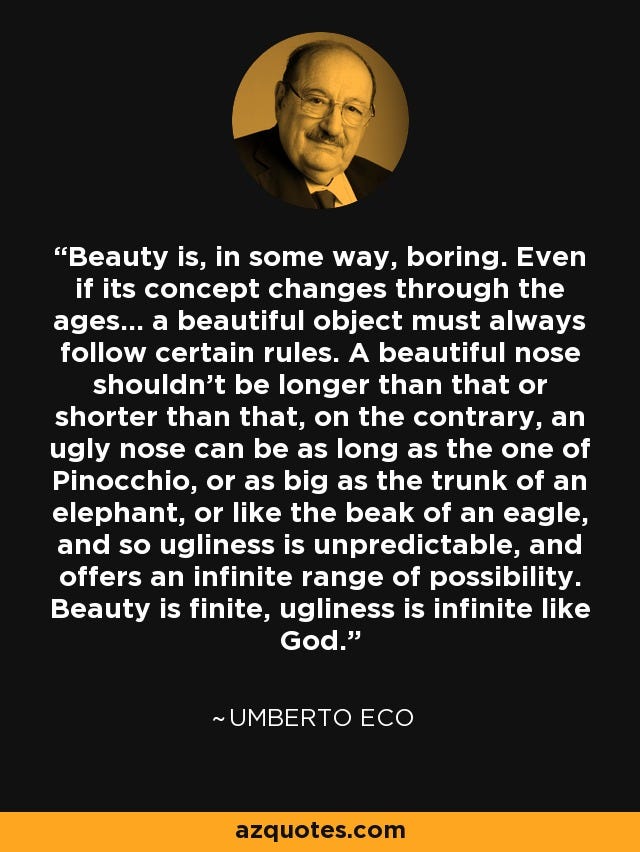The Allure of the Grotesque: Umberto Eco’s Exploration of Ugliness
Review of 'On Ugliness' by Umberto Eco
Title: On Ugliness
Author: Umberto Eco
Publisher: Rizzoli
Publication Date: 2011
Purchase: Amazon (affiliate link)
Welcome to Vintage Cafe, a reader-supported newsletter exploring music, film, books, art, travel, and coffee. This January, enjoy a 20% discount on yearly subscriptions! Sign up now to unlock in-depth reviews, exclusive interviews, travel stories, and more—delivered straight to your inbox.
In On Ugliness, Umberto Eco turns his prodigious intellect to a realm often neglected in the study of aesthetics. While beauty has long been exalted as a pinnacle of human achievement, ugliness has been relegated to the shadows, viewed as an aberration or a foil to the sublime. Eco’s work challenges this dichotomy, presenting ugliness as a dynamic, multifaceted concept that holds as much cultural and philosophical weight as beauty.
Through its deeply structured chapters, lavish illustrations, and a panoramic historical approach, On Ugliness invites readers to explore the grotesque, the monstrous, and the abject as essential components of human creativity and perception. This book is as much a reflection on the cultural history of art and thought as it is a meditation on the human condition.
Ugliness Through the Ages
Eco’s narrative begins with the classical world, where the Greeks and Romans grappled with the grotesque. Although their aesthetics celebrated harmony and proportion, the presence of satyrs, grotesque masks, and monstrous figures in pottery and mythology suggests that ugliness was not entirely ignored. Instead, it served as a counterpoint to beauty, a reminder of the fragility of perfection and the existence of chaos.
The transition to early Christian art introduces a moral dimension to ugliness. Martyrdom, with its grotesque and visceral imagery, became a spiritual tool, embodying the transience of physical suffering and the promise of eternal beauty. Eco’s analysis of such depictions—both in art and text—emphasizes how ugliness was weaponized to inspire awe, fear, and piety.
Keep reading with a 7-day free trial
Subscribe to Vintage Cafe to keep reading this post and get 7 days of free access to the full post archives.






